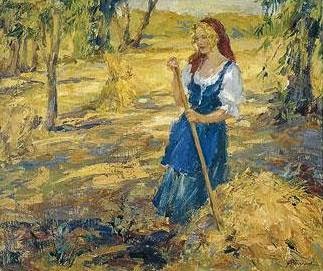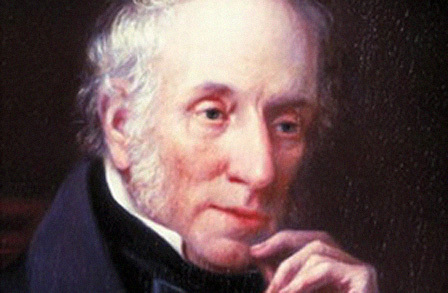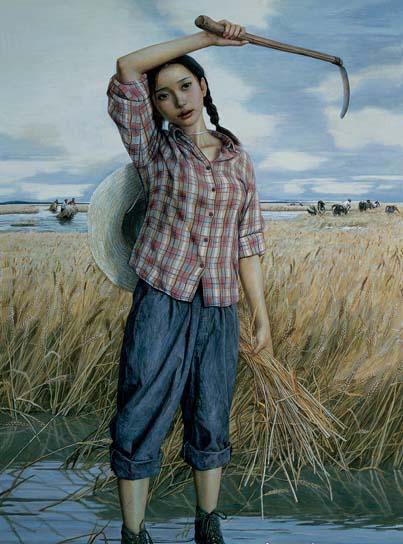‘To a Skylark’ is an ode to the songbird, skylark. In this poem, the poet praises certain qualities of the skylark which are unique to it. And he praises its nature.
About the Poet:
William Wordsworth was born in the year 1770 in Cockermouth in England. He experienced tragedy early on in his life in the form of the death of his mother, and this experience shaped his future works. Wordsworth published his first verse in the year 1793. He gained major fame with Lyrical Ballads, published in the year 1798, written together with Samuel Taylor Coleridge. These two are now known to be the launchers of the Romantic Age. The most notable works of Wordsworth include Lyrical Ballads, The Excursion, and The Prelude. He was Britain’s Poet Laureate, a poet who composes poems for special events and occasions from the year 1843. He died in the year 1850 due to pleurisy.
To a Skylark: Setting
The setting of the poem is the wide sky. Though there are instances when the earth is mentioned, most of the poem takes place in the sky. After all, ‘sky’ is there in the name of the bird the poem is about.
To a Skylark: Poetic Devices
Stanza: The poem is made of two stanzas of six lines each.
Rhyme: The poem follows the rhyme scheme ABABCC. The last words of the first and third lines, of second and fourth lines, and the fifth and sixth lines, rhyme with each other.
Imagery: There is some imagery in the poem. In the first stanza, we see a nest in a dew-covered ground. In the third stanza, we see the nightingale in a shady forest.
Personification: In line four of the second stanza, the skylark is said to thrill the bosom of the plain. Now plains do not have a bosom which only leads to the inference that the speaker personified the plain.
Oxymoron: There is an oxymoron, more of a contradiction in the second line of the third stanza. The skylark is said to have a privacy of glorious light, meaning it has privacy in the open sky.
To A Skylark: Summary
The speaker asks the bird skylark if he hates the earth as it is always flying in the sky. Or does he still think of home while flying high? He praises him for being able to make music even though he cannot drop into his home at will.
The skylark is a daring songbird since it flies so high into the sky. There is a strong bond between him and his home. The songs he sings in the sky spread throughout the plains. He sings independently of the seasons.
The speaker tells the skylark to leave the nightingale to her dark forest. He has all the glorious light to himself. He floods the land with his divine songs. He is wise that raises high but remains connected to his roots, remaining true to both the sky and the earth.
To a Skylark: Analysis
The poem’s speaker begins by calling the skylark an ethereal minstrel, a divine singer and pilgrim of the sky, a traveler of the sky. He asks if he despises the earth, where care thrives. Care here can be taken as something positive, but going by the tone, it most probably means unhappiness. He further asks whether he still has his heart and eye in his home on the dewy ground, even though his wings want to fly. He asks him this since he always sees him high in the sky, wandering and singing. He has a nest that he cannot drop into at will, but his divine music is consistently composed by his quivering wings. The speaker praised the way he can sing his songs even though he cannot enter his home freely.
The meaning of the last sentence can be found in the behavior of the male skylark. This is also the reason why the skylark is addressed as ‘he’ throughout the poem. Skylark is a songbird, and it is a perching bird. But unlike other perching birds, the male skylark only sings when it is in flight, flying high in the sky. So, the ‘cannot enter his home freely’ part means that he cannot be at his home if the skylark wants to fly. It is in its name to be in the sky.
The flight of the skylark is described next. It flies to the last point of vision, and beyond meaning, it cannot be seen by the eye. The speaker calls the skylark daring because of the heights he mounts to. The 3rd sentence of the 2nd stanza is in between dashes, meaning the sentence is given great importance.
Twixt thee and thine a never-failing bond’. The sentence means that there is a strong, unbreakable bond between the skylark (thee) and his home (thine, which can mean earth, where the bird abides or its nest; either way, it represents the ground).
This love of the skylark for his home makes his song no less pleasant on the ground than it is in the sky. Now this here can mean that even though the skylark flies so high and sings, it never forgets his home. He calls him the might’st (mightiest) and proud privilege (a wanderer who takes pride in his wanderings). Mightiest because he sings independently of the leafy Spring, independent of the seasons of the earth. When in the sky, he sings regardless of time.
The speaker tells the skylark to leave nightingale to her shady wood. Nightingale is another songbird that sings in the forests, unlike the skylark, which sings in the open sky. The speaker says that the skylark has privacy of glorious light. Now, this is a little contradictory. The skylark sings in the open sky, so how can it have privacy? One can only assume that the speaker meant that when he (the skylark) was so high in the sky, it does not whether one can see him or not, as one can only see a dot.
The speaker further says that the skylark fills the world with a flood of harmony. He (the skylark) has great instincts as it is the type of bird that soars but never roams. The speaker means to say that however high the skylark mayfly; he always returns to his home. In this regard, the speaker calls the bird-wise.
The skylark is true to the kindred points of Heaven and Home. It means that the skylark is closely related both to Heaven (the skies) and Home (the ground).
To a Skylark: Central Idea
The poem is a beautiful description of the skylark’s behavior. But one can always take away something from poetry. In this case, the readers can take away the wisdom of staying true to their roots, their home even when they rise high in life. Whatever they have to contribute, it must go two ways; towards their elevated position and to their home. Only then can one be truly called wise.
This here is the central idea of the poem. Always maintain a strong never-failing bond with home even when you’re far away. And another central idea of the poem is giving an ode to skylark for its certain unique qualities.
To a Skylark: Tone
The poem adopts a praising tone throughout the poem. Right from the first line of the first stanza, the speaker begins praising the skylark, calling it the divine singer. The tone becomes slightly questioning in the next 3 lines but reverts back to the praising tone from then on.
William Wordsworth produces a lyrical and beautiful poem in praise of the songbird, skylark, that has the wisdom to be connected to home even while roaming high in the sky.
Some online learning platforms provide certifications, while others are designed to simply grow your skills in your personal and professional life. Including Masterclass and Coursera, here are our recommendations for the best online learning platforms you can sign up for today.
The 7 Best Online Learning Platforms of 2022
- Best Overall: Coursera
- Best for Niche Topics: Udemy
- Best for Creative Fields: Skillshare
- Best for Celebrity Lessons: MasterClass
- Best for STEM: EdX
- Best for Career Building: Udacity
- Best for Data Learning: Pluralsight












